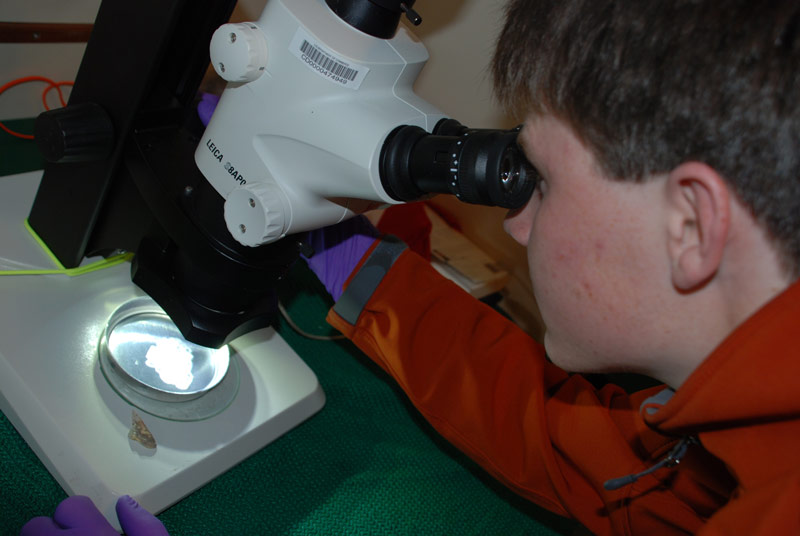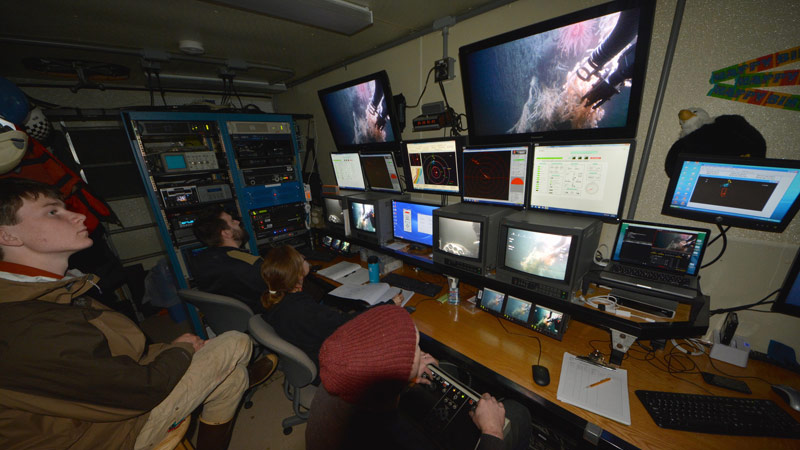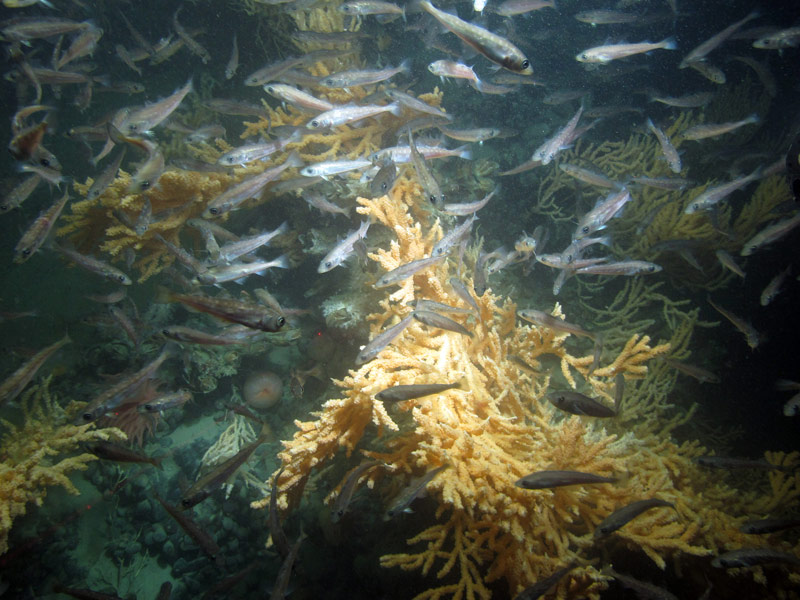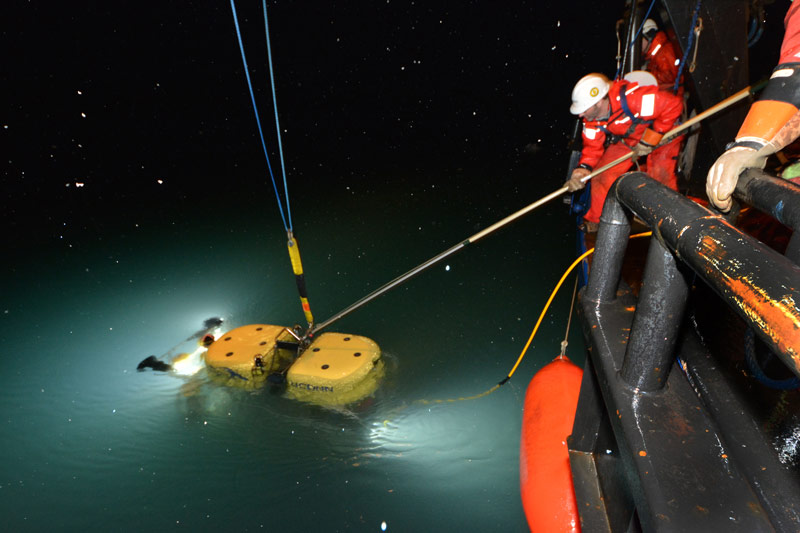
By Rowan Sharman, Glacier Bay National Park, Alaska
March 29, 2016

Rowan Sharman investigates an egg mass that was collected during an ROV dive. Image courtesy of the Deepwater Exploration of Glacier Bay National Park expedition. Download larger version (jpg, 4 MB).
Having grown up in the closest town to Glacier Bay National Park, Gustavus, Alaska, I have a very close connection with, and fairly broad understanding of, the natural history and ecology of the Bay. That said, I am extremely excited to have this opportunity to be one of the first people to see what lies at the bottom of Glacier Bay's unique fjords. I recently graduated from Gustavus School, and this fall I'll be heading off to college to study engineering. I plan to study a combination of disciplines involved with robotics, so this cruise is a great opportunity for me to check out some cool undersea robotics technology. I have been spending as much time as I can in the “van” that the remotely operated vehicle (ROV) is controlled from and when I'm not sleeping or eating, I'm watching the video feed and helping to process the samples brought back from the deep.

Rowan Sharman, Mike McKee, Cheryl Morrison, and Matt Jewell in the control van during ROV operations. Image courtesy of Dann Blackwood, the Deepwater Exploration of Glacier Bay National Park expedition. Download larger version (jpg, 7 MB).
Each ROV dive is a complicated and sometimes tense dance involving the ship, the ROV, and the “depressor” weight. This weight is a one-ton frame of aluminum, lead, and electronics that hangs off the stern of the ship, isolating the vehicle from wave action and other movement of the ship. This ship sometimes has trouble staying “on station” due to the winds and currents of Glacier Bay and the boat has to move, sometimes almost sideways, using only one propeller, one rudder, and one through-hull bow thruster. That can make it difficult for the ROV team to keep the vehicle on the feature that they are investigating.

During the last few ROV dives of the expedition, there were times it was difficult to see the coral through the large schools of fish that seemed to follow us everywhere. Image courtesy of the Deepwater Exploration of Glacier Bay National Park expedition and UCONN-NURTEC. Download larger version (jpg, 4.6 MB).
These problems haven't been too serious, luckily. Most of the time has been spent on the bottom taking pictures and video and collecting samples. Most of the samples are of red tree coral, which is the primary species being studied on this cruise. These samples are cut, broken, twisted, pulled, or otherwise removed from their colonies with the ROV manipulator, otherwise known as “the claw.” The combination of movement of the vehicle and lack of speed and dexterity in the manipulator makes this a challenging task. Each sample is then placed in its own “quiver.” Once the vehicle is back on deck, each sample is processed three different ways, for isotope, reproductive, and genetic analysis. We also photograph and preserve samples of other species collected in the “suction buckets.” These samples are scraped off the rocks and sucked up through a hose attached to the manipulator arm.

Kevin Joy hooks the ROV Kraken2 during a snowy ROV recovery. Image courtesy of Dann Blackwood, the Deepwater Exploration of Glacier Bay National Park expedition. Download larger version (jpg, 6.1 MB).
This cruise has been a very interesting experience for me, both from the scientific and research perspective and from the engineering and technology perspective. It's given me lots of insight into what I'll likely (hopefully) be doing in my career, and definitely started me thinking about both effective and ineffective ways to build things.